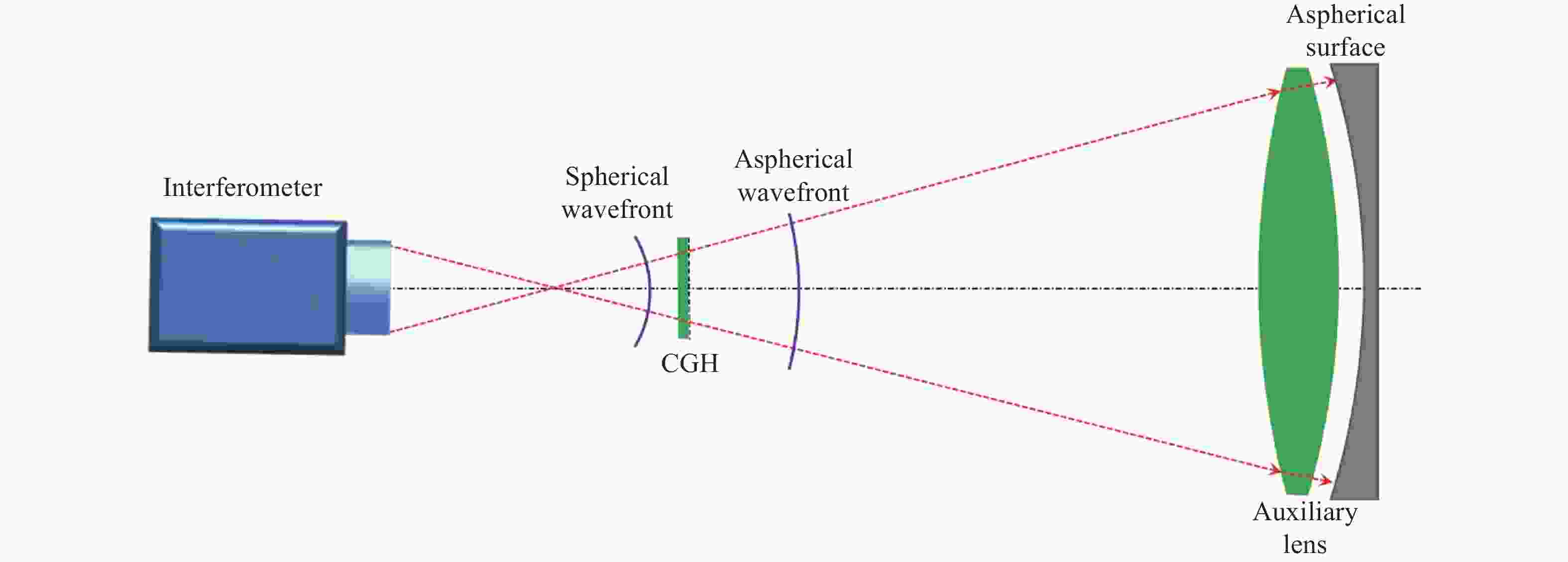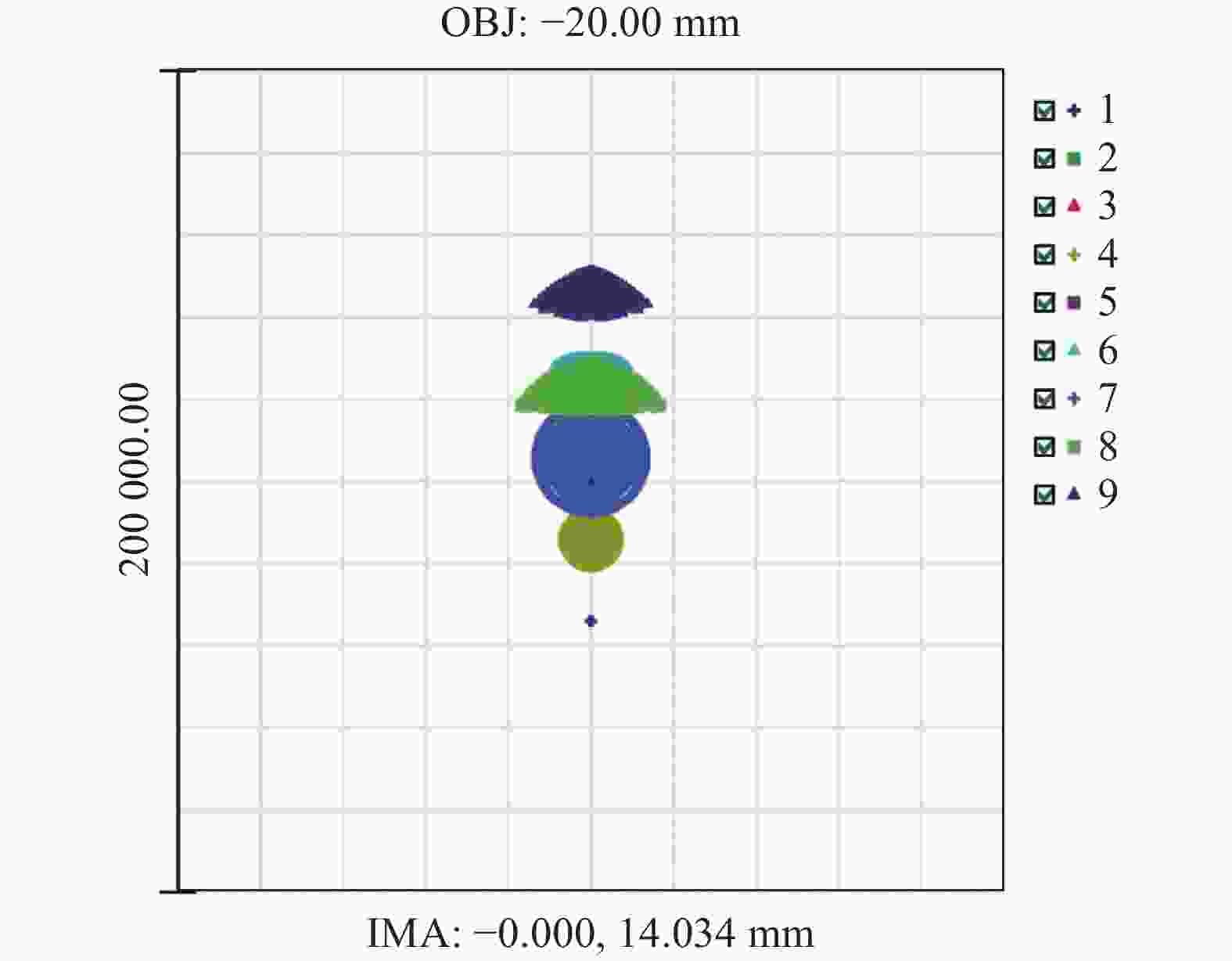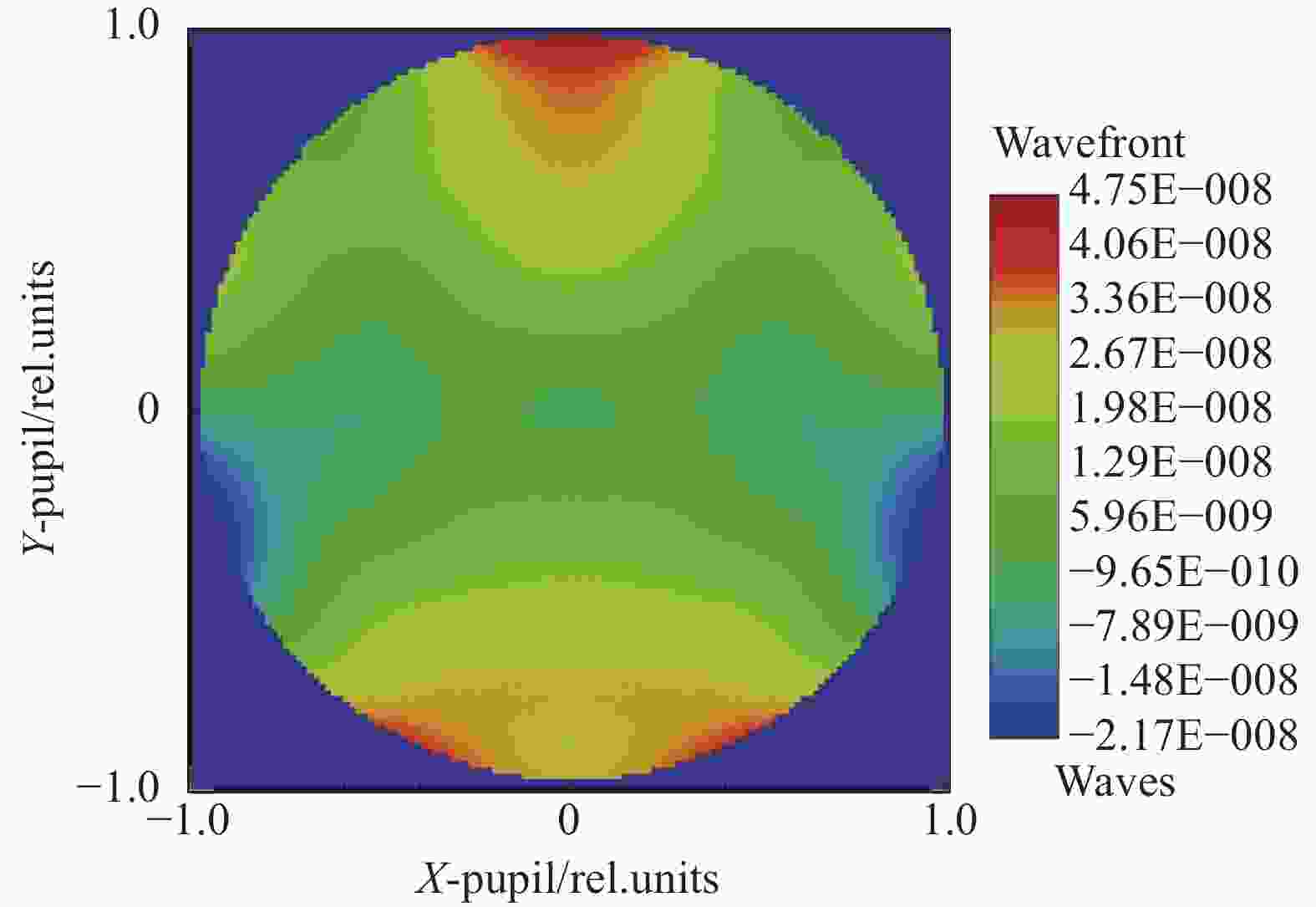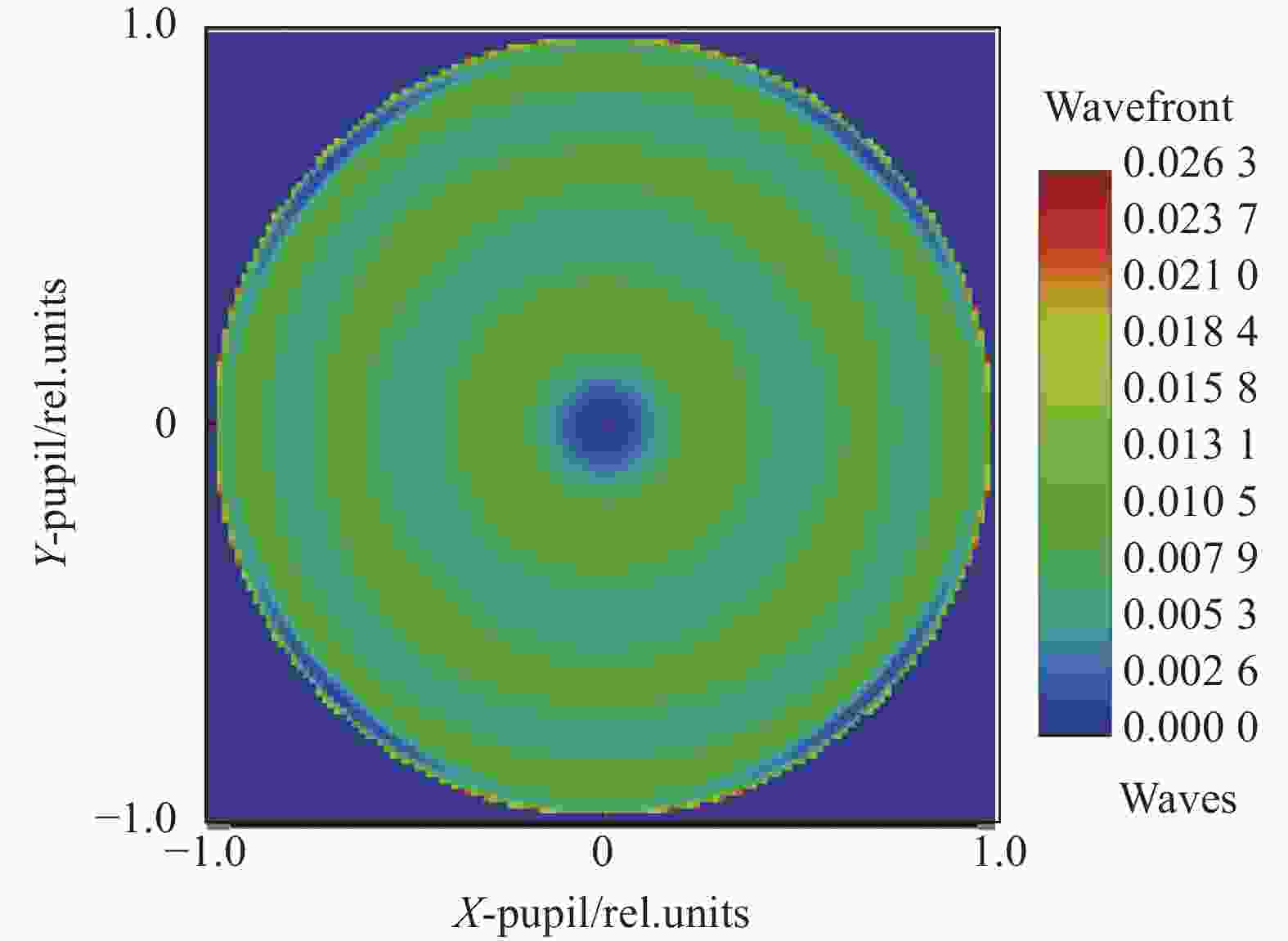-
当前非球面光学技术主要分为非成像光学技术和成像光学技术。在非成像光学中,光学非球面主要应用于光束整形[1]、聚能器及照明[2-3]等领域,研究如何对光线进行合理有效地调控,提高光能分布的均匀性和能源的利用率等问题。在成像光学中,光学非球面主要应用于成像光谱仪[4]、虚拟现实和増强现实的头戴显示系统[5]、极紫外光刻系统[6]及大视场成像系统[7-8]等领域中。光学非球面的使用不仅具有减少光学元件数量、降低光学系统质量和提高光学系统结构紧凑性等优点,更能够提高光学系统性能,改善成像质量。基于非球面的光学系统应用研究已经成为现代高性能光学系统发展的重要方向,对高精度非球面光学元件的制造需求随之而来,而非球面的高精度测量则是高精度非球面光学元件制造的基础。
干涉测量作为一种通用的光学元件最终精度检测方法,其理想状态是实现对待测元件的零位检测。非球面由于其形式上的特殊性,传统二次曲面检测中常用的无像差点检测法、补偿器补偿检测等方法已经无法对其完成零位检测[9-10],为此采用在设计上具有更大灵活性的计算全息元件(Computer Generated Hologram,CGH)对其进行补偿[11-12]。大曲率半径光学元件在光学系统中也有着广泛的应用,例如欧洲极大望远镜(European Extremely Large Telescope,E-ELT)的主镜顶点曲率半径达到84 m量级[13],若采用传统的补偿检测方法,检测光路长度将不低于84 m。检测光路长度越大对检测场地尺寸要求越高,同时对振动、气流扰动等检测环境的要求越苛刻,检测难度越高。上述难点为相关光学系统的设计带来了局限性,严重制约了大曲率半径先进光学系统的开发制造。
目前,国内外众多学者均对CGH补偿方法进行了研究。如亚利桑那大学的Burge等人使用球面与CGH混合补偿方法检测GMT主镜的离轴子镜[14];其也对测试样板与CGH结合的混合补偿方法进行了研究,并利用该混合补偿方式对1.8 m口径的离轴非球面镜进行了混合补偿测量[15];国内中国科学院长春光学精密机械与物理研究所利用单一CGH对离轴非球面镜完成了干涉检测,利用CGH与球面反射镜相结合的方式对口径332 mm×144 mm的离轴凸非球面反射镜完成了零位干涉检测[11];中国科学院光电技术研究所分别利用单一CGH及CGH与反射球面镜相结合的方式对口径φ135 mm的离轴抛物面完成了零位干涉检测[16];南京理工大学利用单一CGH对口径78 mm的高次离轴非球面镜完成了干涉检测[17],利用两个低空间频率的CGH完成了高陡度非球面镜的干涉检测[18];南京航空航天大学利用CGH与球面反射镜混合补偿方式实现了高陡度同轴次镜的干涉检测[19]。
虽然国内相关单位开展了大量非球面面形测试方面的研究,但研究方向主要集中在利用单一CGH补偿检测非球面镜或利用CGH与球面反射镜混合补偿检测凸非球面反射镜。文中主要针对大曲率半径非球面的面形检测提出一种高精度的检测方案,利用CGH与辅助透镜相结合来进行混合补偿测量,结合CGH设计的灵活性,考虑光路中各元件精确对准的实际需求,在CGH的设计过程中设计相应的辅助对准区域,在各光学元件精确对准的条件下,实现对大曲率半径非球面的零位补偿干涉测量,在对待测元件实现零位测量的同时将检测光路长度缩短至非球面曲率半径长度的1/8以内,设计检测精度优于RMS λ/100 (λ=632.8 nm)。该方法在科学上对非球面混合补偿设计方法进行了探索,在技术上解决了由于长光程对检测可行性带来的实际困难,突破了大曲率半径非球面光学系统开发中的一项瓶颈技术。
-
CGH与辅助透镜混合补偿检测光路设计如图1所示。在该光路中,采用辅助透镜缩短检测光路长度,透镜后表面曲率半径与非球面中心曲率半径近似;CGH设计在干涉仪的焦后位置,透镜在减小检测光路长度的情况下,同时补偿部分像差。由于CGH能够产生任意形式的波前,利用其对残余像差进行补偿,从而实现待测长焦距非球面反射镜的零位补偿测量。
-
由于在测试中引入了干涉仪、CGH、辅助透镜及待测非球面镜四个光学元件,各光学元件之间的非对准会在检测结果中引入额外的像差,导致得到错误的测量结果。为此,检测光路中各光学元件间的精确对准显得尤为重要。考虑到CGH设计上的灵活性,根据图1所示光路的结构,在CGH上构建了相应的辅助对准区域,实现对检测中各光学元件间的精确对准。CGH上区域分布如图2所示。
CGH共有五种区域,分别为非球面检测区域(主区域)、CGH与辅助透镜对准区域、CGH与干涉仪对准区域、镜面基准区域(投射十字线至非球面边缘)及透镜基准区域(投射十字线至辅助透镜边缘)。
在调节光路、对准各光学元件时应遵循以下流程:
(1) 在光路对准过程中,首先通过CGH与干涉仪对准区域完成干涉仪与CGH的对准,此时在干涉仪中的干涉仪与CGH对准条纹应处于零条纹状态;
(2) 在完成CGH与干涉仪对准后,会观察到在辅助透镜周围有四个十字线(十字线由图2中CGH透镜基准区域所形成)。利用CGH透镜基准区域所形成的十字线位置完成辅助透镜的粗对准,结合CGH与辅助透镜对准区域,完成辅助透镜在光路中的精确对准;
(3) 在完成辅助透镜摆放后,会观察到在待测非球面周围有四个十字线(十字线由图2中CGH镜面基准区域所形成),依据上述四个十字线位置放入待测非球面反射镜,完成待测非球面镜的粗对准,并结合检测像差调节非球面镜的位置,完成非球面的精确对准。
-
为了验证该方案的原理可行性,对EELT主镜镜面进行了模拟检测。EELT主镜顶点曲率半径为84000 mm,二次曲线常数k为−0.9933,口径D取离轴1500 mm。若采用CGH单独补偿,此时光路长度约为84000 mm。为了缩短检测光路长度,采用CGH与辅助透镜混合补偿检测方法,检测光路设计如图3所示。

图 3 CGH与辅助透镜混合补偿检测非球面镜
Figure 3. Aspherical hybrid compensation testing with CGH and auxiliary lenses
测试系统光路长度为10000 mm,对应的设计结果残差如图4所示。可以看出,设计残差的PV值为0.0751λ,RMS值为0.0085λ,设计结果可以实现对待测非球面的高精度检测。

图 4 CGH与辅助透镜混合补偿检测设计残差
Figure 4. Residual map of hybrid compensation testing with CGH and auxiliary lenses
补偿检测中,主区域各级衍射级次分离结果如图5所示。可以看出各衍射级次充分分离,可以在检测中避免串扰。
同时,在检测中还要实现CGH与干涉仪及CGH与辅助透镜的高精度对准,其中干涉仪与CGH对准光路设计结果如图6所示,对准残差设计结果如图7所示。由图7可以看出,CGH与干涉仪对准区域设计残差的PV值与RMS值均为0,可以依据该区域实现干涉仪与CGH的高精度对准。
对于CGH与辅助透镜前表面对准设计光路如图8所示,对应的对准区域设计残差如图9所示。由图9可以看出,CGH与辅助透镜对准区域设计残差的PV值为0.0263λ,RMS值为0.0024λ,设计结果可以实现CGH与辅助透镜的高精度对准。
由上述分析可以得到,利用图2所示的CGH设计,可以实现对长焦距非球面的零位补偿干涉测量。同时,在测量中,可以实现CGH与干涉仪、CGH与辅助透镜及CGH与待测非球面间的高精度对准,即实现了检测中各光学元件间的精确对准,从而避免了由于失调而在检测结果中叠加失调像差、造成检测结果错误的情况。因此,可以利用上述方法实现对于长焦距非球面的高精度零位补偿测量。
-
文中提出了一种基于CGH与辅助透镜相结合的混合补偿测量方法,在缩短检测光路长度的前提下,实现对长焦距非球面反射镜的零位补偿干涉测量。利用CGH在设计上的灵活性,通过构建不同的衍射区域,可以通过一块CGH实现检测光路中各光学元件,包括干涉仪、CGH、辅助透镜及待测非球面反射镜的精确对准。通过对EELT主镜的混合补偿测量分析,检测光路长度可以缩短至镜面曲率半径长度的1/8以内,同时,设计检测精度RMS值高达0.0085λ,验证了所述方法的实用性与精度。由于目前只是在理论上验证了该方法的可行性,在实际测试中还有许多问题需要解决,例如透镜的透射波像差如何标定、系统的检测畸变如何校正等。
Long focal length aspherical mirror testing with CGH and auxiliary lenses (invited)
-
摘要: 目前,一些大口径光学望远镜主镜的曲率半径已经达到了几十米量级,若单纯利用计算全息实现对镜面进行面形检测,则检测光路长度不低于其曲率半径长度。受场地大小及环境气流扰动等因素的限制,该条件下难以实现对镜面的高精度测量。为了解决大口径长焦距光学镜面的高精度面形检测问题,提出了一种混合补偿干涉检测方法。该混合补偿方法结合了计算全息图和辅助透镜,在有效地缩短检测光路长度的前提下,可以实现对非球面镜面的零位补偿干涉测量。在光路设计中,需要有效地实现混合补偿光路光学设计参数优化以及对CGH衍射级次的分离;同时,检测光路长度应小于非球面反射镜曲率半径大小,以实现缩短检测光路长度的目的。通过对EELT主镜镜面进行仿真检测,结果表明:该方法检测光路长度可缩短至镜面曲率半径长度的1/8以内,设计检测精度优于RMS λ/100 (λ=632.8 nm)。上述仿真结果证明了该方法可以在缩短检测光路长度的情况下实现对待测非球面反射镜的高精度面形检测。Abstract: At present, the radius of curvature of the primary mirror in some large-aperture optical telescopes has reached the order of tens of meters. If the surface of the mirror is tested simply by CGH, the length of the testing optical path is not lower than the length of its radius of curvature. Due to factors such as site size and ambient airflow disturbance, it is difficult to achieve high-precision measurement of the mirror surface under these conditions. In order to solve the problem of high-precision surface testing of large-aperture long focal length optical mirror, a hybrid compensation method is proposed. This hybrid compensation method combines CGH and auxiliary lenses to effectively shorten the length of the testing optical path, and can realize null testing of aspherical mirrors. In the optical path design, it is necessary to effectively optimize the optical design parameters of the hybrid compensation optical path and the separation of the CGH diffraction order. At the same time, the optical path length should be less than the radius of curvature of the aspherical mirror to achieve the purpose of shortening the length of the testing optical path. By testing the EELT main mirror, the simulation test shows that the testing path length of the method can be shortened to less than 1/8 of the length of the radius of curvature of the surface. Designing testing accuracy is better than that of RMS λ/100 (λ=632.8 nm). The above simulation results show that this method can not only realize the shortening the length of the testing optical path, but also achieve the high-precision surface testing of the aspherical mirror.
-
Key words:
- optical testing /
- interferometry /
- hybrid compensation /
- computer generated hologram
-
-
[1] Zhang Shuang, Qin Hua, Yang Kai, et al. Particle swarm optimization method for designing aspheric lens Gaussian beam shaping [J]. Infrared and Laser Engineering, 2017, 46(12): 1206005. (in Chinese) doi: 10.3788/IRLA201746.1206005 [2] Ma Linfeng, Liu Zhiying, Huang Yunhan, et al. Optical design and analysis of illumination system based on augmented reality [J]. Journal of Applied Optics, 2022, 43(2): 179-190. (in Chinese) [3] Zhu Zhengbo, Wei Shili, Fan Zichao, et al. Freeform illumination optics design for extended LED sources through a localized surface control method [J]. Optics Express, 2022, 30(7): 11524-11535. [4] Yu Lei. Development and application of imaging spectrometer (Invited) [J]. Infrared and Laser Engineering, 2022, 51(1): 20210940. (in Chinese) doi: 10.3788/IRLA20210940 [5] Wang Y, Liu W, Meng X, et al. Development of an immersive virtual reality head-mounted display with high performance [J]. Applied Optics, 2016, 55(25): 6969. doi: 10.1364/AO.55.006969 [6] Bernhard Lamprecht, Andreas Ulm, Philip Lichtenegger, et al. Origination of free-form micro-optical elements using one- and two-photon grayscale laser lithography [J]. Applied Optics, 2022, 61(8): 1863-1875. [7] Luo Jing, Wang Jinxin, Ju Guohao, et al. Computer-aided alignment for large-aperture off-axis three mirrors optical system with artificially random air flow [J]. Optics and Precision Engineering, 2022, 30(7): 802-812. (in Chinese) [8] Li Xinghua, Zhang Dong, Gao Lingyu, et al. Study on line-of-sight deflection error for off-axis three mirror system [J]. Infrared and Laser Engineering, 2018, 47(9): 0918005. (in Chinese) [9] Chen Qinfang, Li Yingcai, Ma Zhen, et al. Alignment of off-axis conic aspheric mirrors in stigmatic null test [J]. Acta Optica Sinica, 2011, 31(2): 0222001. (in Chinese) [10] Yan Junhua, Hu Zijia, Zhu Deyan, et al. Design of compensator for parabolic aspheric surface zero interference detection [J]. Electronic Design Engineering, 2022, 30(6): 66-75. (in Chinese) [11] Yan L, Zhu D, Zeng X, et al. Experimental study on hybrid compensation testing of an off-axis convex ellipsoid surface [J]. Optics Express, 2019, 27(20): 27546. doi: 10.1364/OE.27.027546 [12] He Yuhang, Li Qiang, Gao Bo, et al. Measurement of the transmission wavefront of a large-aperture aspheric lens based on computer-generated hologram [J]. Laser & Optoelectronics Progress, 2019, 56(2): 021202. (in Chinese) [13] Li H Y, Walker D, Yu G Y, et al. Modeling and validation of polishing tool influence functions for manufacturing segments for an extremely large telescope [J]. Appl Opt, 2013, 52(23): 5781-5787. [14] Burge J H, Kot L B, Martin H M. Design and analysis for interferometric measurements of the GMT primary mirror segments [C]//Proceedings of SPIE, 2006, 6273: 627322. [15] Burge J H. Efficient testing of off-axis aspheres with test plate and computer-generated holograms [C]//Proceedings of SPIE, 1999, 3782: 348-357. [16] 李世杰. 离轴非球面的组合全息检验: [博士论文], 成都, 中科院光电技术研究所, 2014. Li Shijie. Testing off-axis aspheric surface by combined-hologram [D]. Chengdu: The Institute of Optics and Electronics, Chinese Academy of Sciences, 2014. (in Chinese) [17] 刘亮. 基于离轴型CGH的非球面检测技术研究 [D]. 南京: 南京理工大学, 2009. [18] Dou Jiantai, Gao Zhishan, Yang Zhongming, et al. Deep aspheric surface test based on combination of computer generated holograms with low spatial frequency [J]. Acta Optica Sinica, 2016, 36(11): 1112004. (in Chinese) [19] Zhu D Y, Wang F, Li P, et al. Research on hybrid compensation testing of convex aspherical mirror [J]. Optics and Lasers in Engineering, 2020, 132: 106108. -







 下载:
下载:









